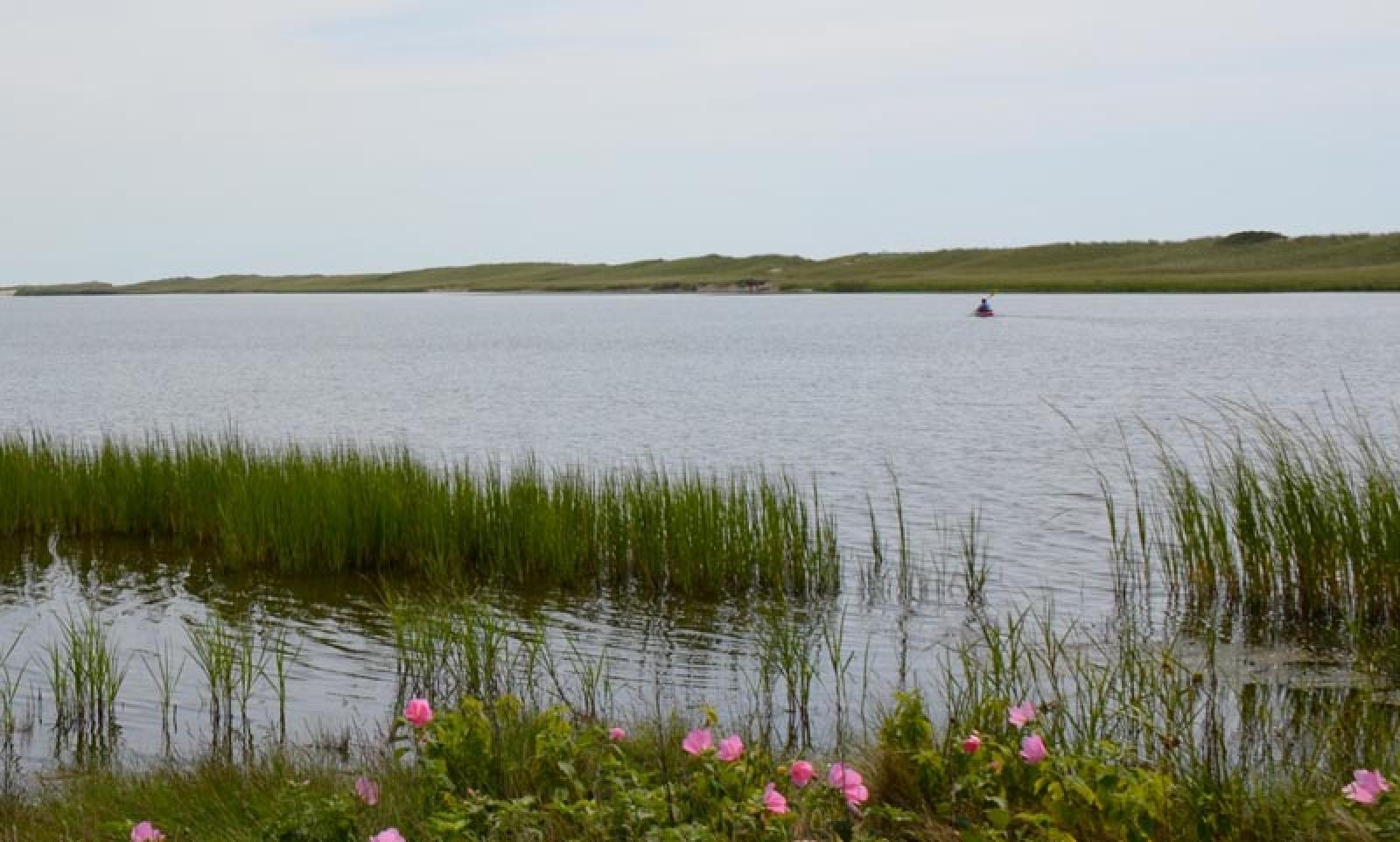A floating raft of plants and flowers bobs atop a pond, quietly removing excess nitrogen.
This is the surface of an aquatic restorer — one of John Todd’s many alternative clean water solutions he described to shellfish constables, harbor masters and others at the Tisbury senior center Thursday evening, in a talk hosted by Tisbury Waterways Inc.
Mr. Todd is a Cape Cod biologist and pioneer in the design and construction of ecological wastewater treatment systems. He recreates natural ecosystems to treat wastewater, both in his aquatic restorers and Eco-machines.
“We call the idea of sewage treatment an old-fashioned concept,” he told the gathering of about 40 people. “We are moving toward the idea of nutrient farming as the new way to go.”
The aquatic restorer works to remediate ponds by removing existing nitrogen. It essentially mimics a natural saltwater marsh, although mechanically — plants on the surface have roots which aerate water that is pumped upward from an underwater micro-filter component in the sediment layer.
“The idea is to remove nutrients by using plants and bacteria to out-compete algae, because those nutrients have to go somewhere,” Mr. Todd said.
In order for the plants to convert nitrogen into a harmless nitrogen gas, they need a carbon source, which is provided by fish and shellfish, creating a symbiotic relationship for all forms of life.
“We are reversing the paradigm, instead of a cost, it becomes a resource,” Mr. Todd said.
He said the system has been installed with success at a Four Seasons resort pond in Kona, Hawaii, which is suffering from algal blooms, and Chincoteague Bay in Berlin, Md., which has been affected by waste from the nearby Tyson poultry processing facility.
The Oak Bluffs shellfish department has written a grant application in collaboration with Mr. Todd and his company to the state Department of Environmental Protection for an aquatic restorer to be installed in Lagoon Pond. The pond’s present nitrogen loads are 34.6 per cent higher than the allowable threshold, according to the application. The proposed restorer would treat 80,000 gallons of water per day by pumping it from the sediment layer up toward the restorer’s roots.
While the aquatic restorer remediates existing nitrogen in saltwater ponds, Mr. Todd’s Eco-Machine targets the source of the problem: wastewater. The Eco-machine is a decentralized wastewater system that captures water directly from septic systems and sends it into a greenhouse with tanks, said Camron Adibi, project manager at Mr. Todd’s company.
“These aquatic cells have all the kingdoms of life in them — bacteria, fungi, fish, snails, all sorts of things,” said Mr. Adibi following the meeting. “The premise is that with biodiversity, there is always one organism that finds the food and eats it. So we are creating an ecosystem that flourishes in this environment and treats multiple contaminants.”
The wastewater treatment system uses no chemicals.
“We aren’t just treating wastewater — our goal is nutrient management,” Mr. Adibi said. “We are trying to use these nutrients that have value.”
Mr. Adibi said cluster developments on the Island would be ideal for the Eco-Machine.
Melinda Loberg, president of Tisbury Waterways Inc. and a member of the Tisbury Wastewater Committee, said the alternative systems are among many options the towns are exploring as they confront the question of whether and how much to expand sewer systems in some of the more densely-developed areas.
“It’s not just about getting bigger and better sewage systems, because for some places that is impossible,” Ms. Loberg said. “You can’t sewer sparsely- settled areas.”
She continued: “I think there’s a lot of food for thought. It’s hard for the laymen to sort of assess what is good or how it might work. We are all sort of in a learning phase and trying to gather information, but eventually you have to start doing something.”
Sheri Caseau, water resources planner at the Martha’s Vineyard Commission, agreed that the presentation was thought-provoking.
“The alternatives seem like the way to go,” she said. “They sound great but there has to be science behind it and it has to be approved by the DEP before we can actually see these things happen.”






Comments (1)
Comments
Comment policy »